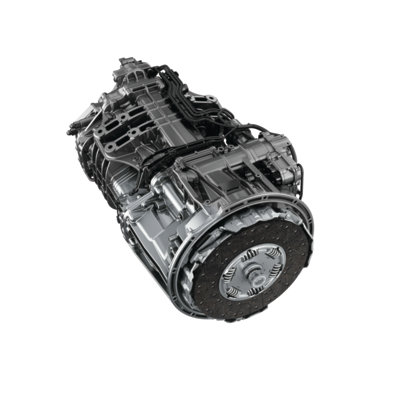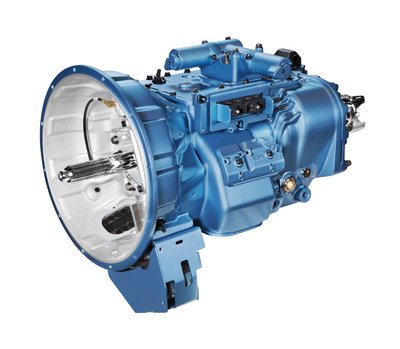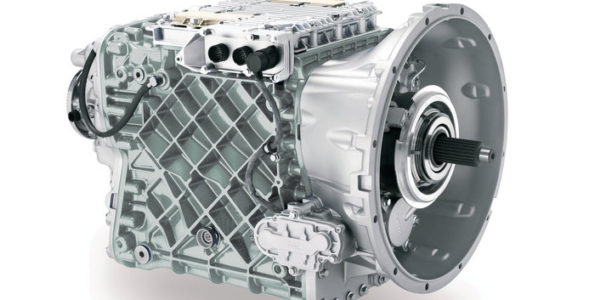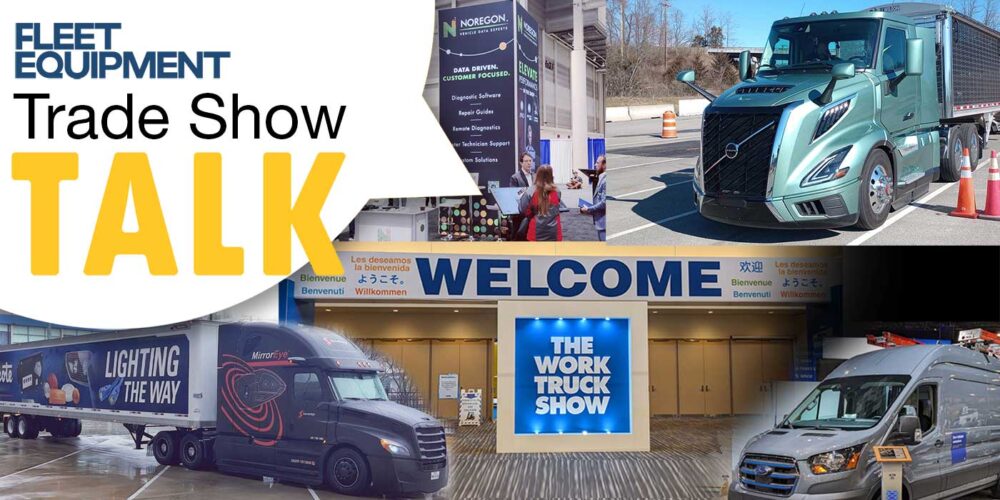 While the engine supplies the power, the transmission puts the integration to work.
While the engine supplies the power, the transmission puts the integration to work.
“Integration allows the engine and transmission to streamline communications and decision making,” said John Moore, Volvo Trucks product marketing manager-powertrain. “The transmission is programmed to shift based on the peak torque of the engine and not specific RPM points. Trucks can maintain speed on a grade all the way down to 1,050 RPM without shifting because the engine is at peak torque. When it is time for a shift, the engine does not have to rev up to 1,600 RPM to maintain momentum. By working together, the components use downspeeding and peak torque to provide the desired blend of performance and fuel efficiency.”
The transmissions in downsped drivetrains are all automated manual transmissions (AMT) or automatic transmission, and come in both overdrive and direct drive gear configurations. Detroit expects that downspeeding will continue to drive AMT transmission adoption because it is extremely hard to operate a downspeed engine/axle set-up with a manual transmission. Often times, the sweet spot is smaller than what engine OEMs have been offering, because an automated manual transmission is specifically designed to keep the engine in that sweet spot.
“Ratios that give the lowest engine cruise RPMs might be used more often with an automated manual [not automatic] transmission since shifting frequency will increase and not as much driver skill is required,” said Jim Bingaman, Peterbilt application engineering manager.. “It’s important to note the very lowest ratios are designed for direct drive manual transmissions [2.26, 2.39, etc] but they won’t necessarily give you the lowest engine cruise RPM like an overdrive.”
Aaron Peterson, Navistar chief performance engineer, on-highway tractor, explained that overdrive transmissions have top gear ratios in the 0.8 to 0.86 range are typically paired with a rear axle ratio between 2.64 and 2.80. While they do have an additional gear mesh in top gear, the driveline torque is reduced.
“The direct drive transmissions are typically paired with a rear axle ratio between 2.26 and 2.39,” he said. “In these drivetrain systems, the driveshaft torque will be much higher. There are control strategies available to minimize the risk of failures in the drivetrain by limiting engine speed and torque in lower gears; however, we will require upsizing of components to prevent failures.”
“The direct drive transmission is more efficient by eliminating the churning losses with the active gear mesh in overdrive,” added Robert Ostrander, Meritor chief engineer, drivelines. “Owners should be aware that often direct drive transmissions have a numerically larger ratio in first and reverse gear. The larger ratio will transmit more torque to the drive shaft and rear axle that can contribute to unintended damage to those components.”
 Downspeeding takes advantage of increasing the amount of time the engine spends at its most fuel-efficient operating point. One of the key enablers to that goal is updated automated transmissions shift calibrations and gear sets. Software plays a role in achieving the proper integration to maximize fuel economy. Let’s not forget the driver.
Downspeeding takes advantage of increasing the amount of time the engine spends at its most fuel-efficient operating point. One of the key enablers to that goal is updated automated transmissions shift calibrations and gear sets. Software plays a role in achieving the proper integration to maximize fuel economy. Let’s not forget the driver.
“With all of the advancements in technology, design and spec’ing, the driver is still the most important variable when it comes to fuel economy,” said Kelly Gedert, manager, powertrain marketing for Daimler Trucks North America. “In addition to spec’ing the right powertrain, driver training is critical to achieve optimal downspeeding performance. Drivers need to grasp that the ‘fuel economy sweet spot’ is now much lower than with previous technology, and that the transmission manages the entire powertrain for efficiency. It’s also important that drivers understand not only how the system operates, but how it can help them achieve a smoother ride and reduce fatigue, making the advantages of downspeeding even more appealing.”














